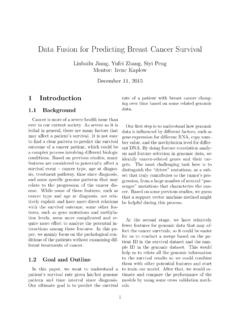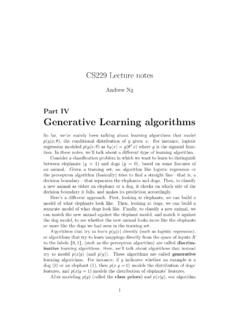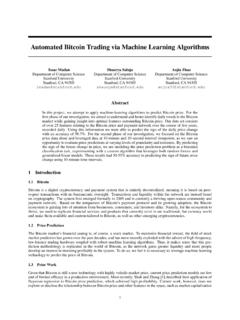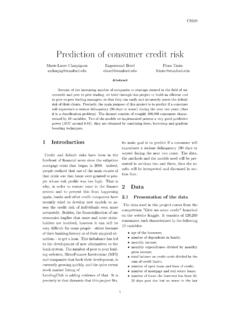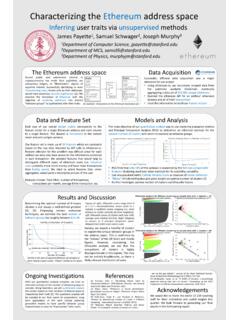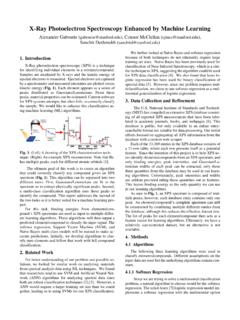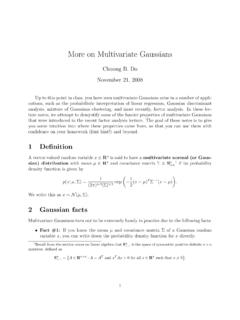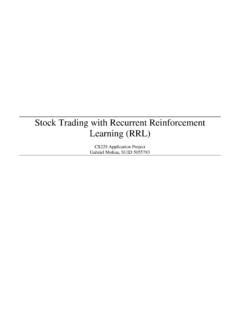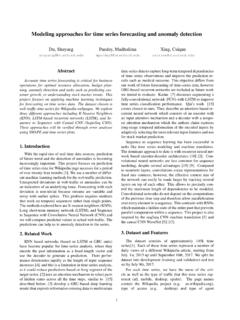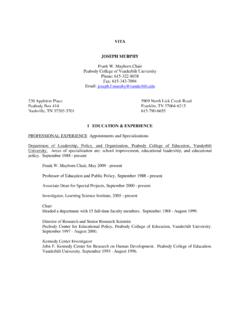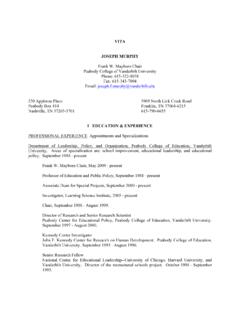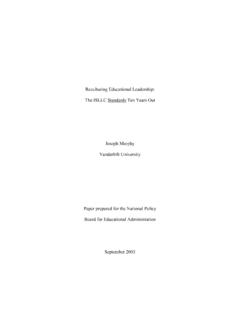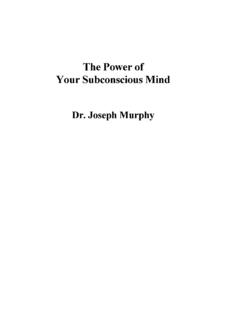Transcription of James Payette,1 Samuel Schwager, and Joseph …
1 Draft version December 16, 2017 Typeset using LATEX default style in AASTeX61 CHARACTERIZING THE ETHEREUM ADDRESS SPACEJ ames payette , 1 samuel schwager ,2and Joseph Murphy31 Department of Computer Science, Stanford University, Stanford, CA 94305, USA2 Department of Mathematical and Computational Science, Stanford University3 Department of Physics, Stanford UniversityABSTRACTA decisive clustering of an inherently anonymous blockchain ecosystem would allow traits of specific users and, morebroadly, overarching user groups to be inferred from publicly available blockchain data.
2 Due to its built-in programminglanguage, the Ethereum blockchain acts as a base layer upon which arbitrary smart contracts and decentralizedapplications can be developed. As such, we postulate that the Ethereum blockchain s formidable functionality andextensibility provide an exceptionally rich set of data compared to other popular blockchain ecosystems and that thisdata can be used to achieve an informed clustering of the Ethereum address space. Utilizing the k-means clusteringalgorithm in conjunction with Calinski-Harabasz scoring, we propose a segmentation of the Ethereum address spaceinto four distinct behavior groups, which we herein discuss and evaluate both quantitatively and.
3 Unsupervised learning, clustering, Ethereum, blockchain, cryptocurrency, smart contracts,decentralized applications2 payette , schwager , the advent of Bitcoin, awareness and excitement around cryptocurrencies and the underlying blockchaintechnology that enables them have increased exponentially. Fundamentally, cryptocurrencies provide anonymity inthat users operate via an address or set of addresses devoid of any personal information. However, also fundamental tothe technology is the fact that blockchain data is completely publicly available and could therefore theoretically be usedto successfully characterize or even identify users, resulting in considerable security implications (see Monaco (2015))and other potential consequences and benefits.
4 As such, we sought to gather a comprehensive dataset of Ethereumaddresses and their associated metadata upon which we could apply cluster analysis to then divvy said addresses intobehavior groups sharing similar WORKS everal attempts have been made to identify addresses based on transactions from the Bitcoin blockchain et al. (2013), Neudecker & Hartenstein (2017), Poikonen (2014); however, to our knowledge, this is the firstsuch project focused on the Ethereum address space. Similar to our approach, other projects utilize several clusteringmethods, but k-means seems to be the primary algorithm employed due to its versatility and scalability with largedata main quantitative obstacle we had to navigate was making an educated estimate of the optimal number of clustersto use for learning, as this would inform our qualitative analysis by partitioning the address space into a discrete setof behavior groups.
5 The issue of determining the optimal number of clusters, however, is not always a well-definedproblem. Kodinariya & Makwana (2013) review six different evaluation techniques that range from quantitative toheuristic, including silhouette scoring a measure of inter- and intra-cluster variance and the so-called elbow method ,which attempts to estimate where the returns of adding additional clusters begin to diminish. Tibshirani et al. (2001)attempts to formalize the elbow method in a quantitative framework via the gap statistic.
6 Our analysis has drawnfrom these works as they have guided our choice of clustering algorithms and evaluation metrics. Perhaps the mostimportant upshot in examining related works was determining that the clustering and qualitative analysis of theaddress space is a problem open to experimentation and SET AND FEATURESD espite the public nature of the Ethereum blockchain data, gathering a significant dataset proved to be one of themost formidable challenges we faced throughout the course of our project.
7 We relied on the API for allof our data gathering efforts, and as such were subject to the constraint of a maximum of 5 requests per second. Wecarefully constructed Python scripts that made hundreds of thousands of requests to the API, handling all possibleedge cases and failure scenarios. Ultimately, we were able to gather a dataset consisting of 250,000 addressess alongwith their respective Ethereum balances and full transaction histories. Please find our data collection scripts includedin our code this data, we created a design matrix with each row corresponding to one of the 250,000 addresses and thecolumns corresponding to 34 different features, some of which are included in table 1.
8 Due to the size of our data set,we had to make various algorithmic decisions in order to approach our analysis experimented primarily with three clustering algorithms: k-means clustering, hierarchical or agglomerativeclustering, and Birch clustering. In order to test the efficacy of our clusterings we used unsupervised evaluationmetrics including Calinkski Harabaz scoring as well as heuristic evaluation metrics such as the so-called elbow method as described in Bholowalia & Kumar (2014), for example.
9 Ultimately, we found that k-means, in many respects thesimplest of the three clustering algorithms, combined with Calinkski Harabaz scoring to be the best method of a client-specified number of clusters,K, the k-means algorithm divides the data intoKclusters, generallyunequal in size, with the objective of minimizing the inertia, or the sum of the squared distance between each clusterelement and its cluster centroid. Our analysis utilized the k-means implementation from Pedregosa et al. (2011) [ ], which had the advantage of being very computationally efficient a necessary condition given the size ofour data set.
10 While k-means was effective, the algorithm isverysensitive to data outliers. We discuss how this issuewas addressed in section that the problem is unsupervised, evaluation metrics tend to report how well the data has been is, unsupervised evaluation metrics measure intra- and inter-cluster variance to determine how effectively theCharacterizing the Ethereum Address Space3 Figure Harabaz score versus num-ber of clusters using the Birch clustering shown for comparison and corroboration ofk-means result (Figure 2).
